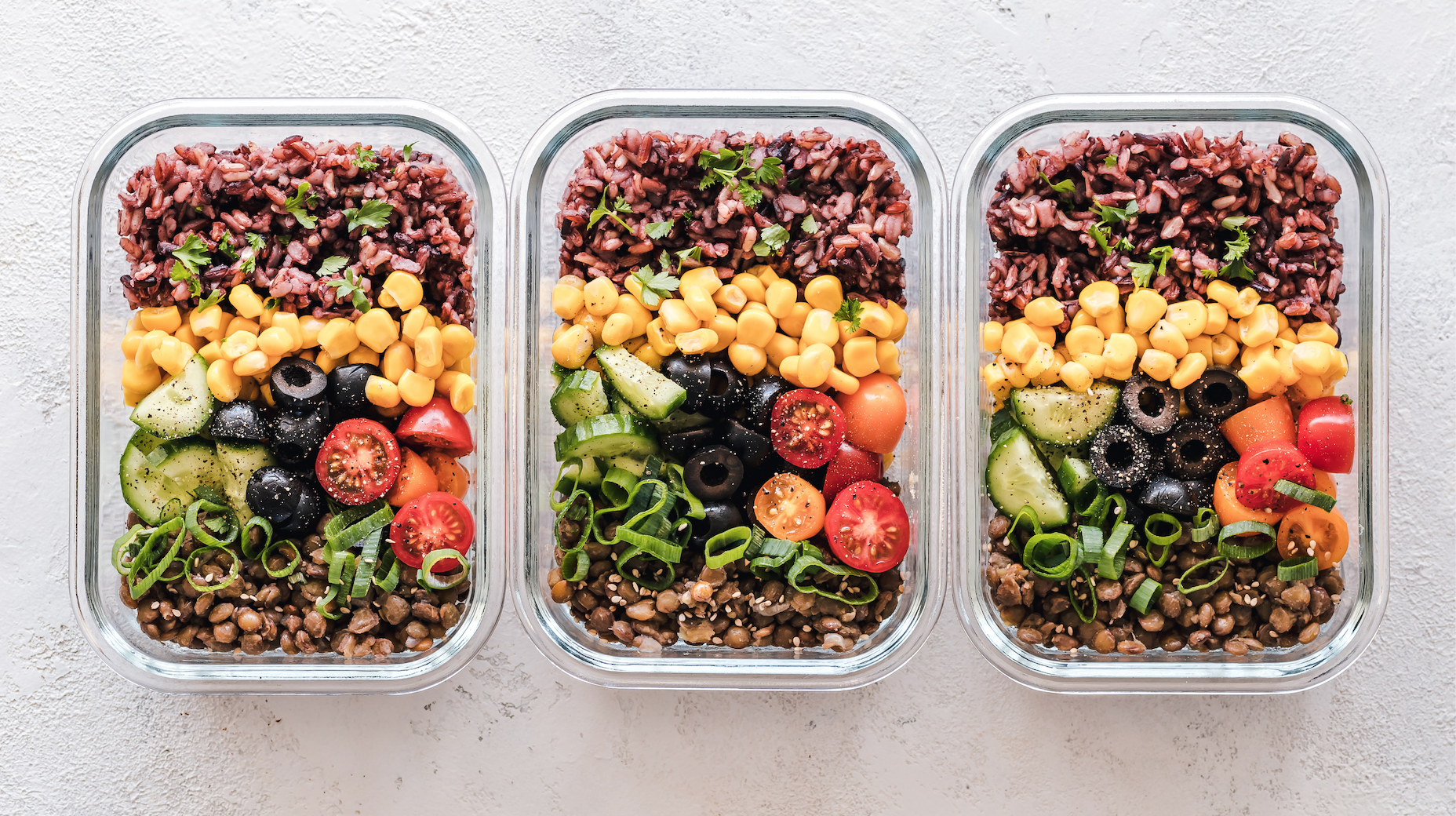A Beginners Guide to Meal Prep

What is the first thing that comes to mind when you hear the phrase “meal prep”? Chances are you are thinking about bland meals like chicken and rice or committing hours to prepare a week’s worth of meals. Despite the assumptions we may have about meal prepping, this practice can largely benefit students who may live on smaller budgets or are new to cooking. Whether you are interested in learning how to stretch your dollar or perfect a new dish, meal prepping may be of benefit to you.
What are the benefits of meal prepping?
Save time and money: By planning meals ahead of time, you can cut down on the amount of time you spend in the kitchen, as well as curb the temptation to order takeout. Meal prepping is perfect for days when you have back-to-back meetings or zoom lectures and can’t be bothered to cook full meals.
Reduce your food waste: We often buy food without planning meals ahead of time, this makes it more likely that fresh meat and produce will go bad. By planning meals ahead of time and shopping accordingly, we can reduce our food waste.
Quick access to healthy meals: University can prompt unhealthy eating habits like stress-eating and unplanned fasts. By preparing healthy meals that you can quickly grab from the fridge, it is easier to choose nourishing options over what is the most convenient.
What are the different types of meal prepping?
Many people assume that meal prepping means cooking full meals, but there are three different methods of meal prep that suit different needs and cooking abilities.
Batch cooking: Large meals like Lentil soup and Chili are perfect for cooking in a large batch and freezing later into single portions.
Individually portioned meals: Pre-portioned meals are helpful for people with busy schedules or who are always on the go.
Prepared Ingredients: You don’t have to make full meals to meal prep! Try preparing a few side dishes that you can use throughout the week and add to your meals like pre-cut veggies, roasted potatoes, or quinoa.
How to Start Meal Prepping:
Step 1: Choose a meal and method.
If you are new to meal prepping, choose a meal that you know you like and will want to eat a couple of times a week. Begin by making a shopping list of the ingredients you will need to make at least 3 portions. Although it may be tempting to make a week’s worth of the same meals, it’s easy to get bored of eating the same thing every day.
If you are preparing ingredients that you can eat throughout the week, consider dishes like roasted potatoes, sautéed veggies, and granola bars that could be eaten for breakfast, lunch, dinner or as a snack.
Consider foods that stay well in the fridge when planning your meals. Stick to cooked grains, beans, meat, hearty vegetables, and whole fruit. You may want to stay away from ingredients that get soggy after time like cut fruit and crunchy, fried foods like fried fish.
Step 2 & 3: Prepping, cooking and storage
Set time aside to prepare your food. People often dedicate Sundays to meal prep before the start of the week. Once your meals are prepared, store them in the fridge or freezer. Refrigerated meals will typically last between 2-5 days, where frozen food will stay good for 3-4 months.
Aside from making meals more convenient, meal prepping may help you achieve some goals you may have set for yourself whether it be eating more routinely, reducing the amount of money you spend on takeout, or simply spending more time in the kitchen. Check out the list below for meal prep dishes and sides that are perfect for any student budget! Happy prepping!
Batch Cooking:
Individually portioned meals:
Overnight Oats (with peanut butter)
Prepped Ingredients:
By: Rachel Lieske
Food & Nutrition, Physical Health, Stress Management